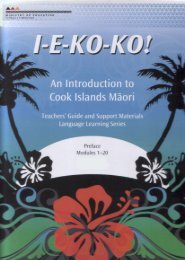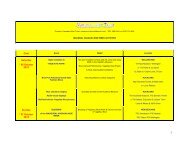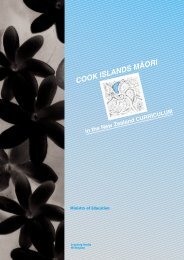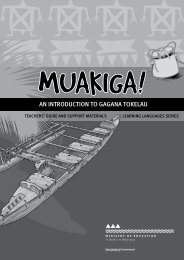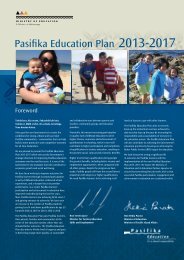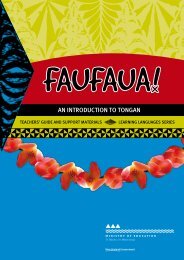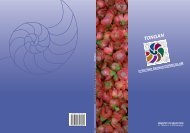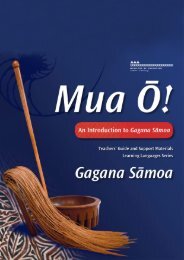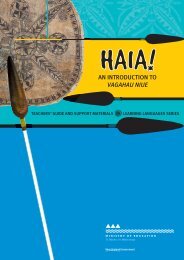Ta'iala mo le Gagana SÄmoa - Pasifika Education Community
Ta'iala mo le Gagana SÄmoa - Pasifika Education Community
Ta'iala mo le Gagana SÄmoa - Pasifika Education Community
You also want an ePaper? Increase the reach of your titles
YUMPU automatically turns print PDFs into web optimized ePapers that Google loves.
Vāega 2: ‘O ni fa‘ata‘ita‘iga i <strong>le</strong> aganu‘u fa‘asā<strong>mo</strong>aLevel 2: Suggested aspects of fa‘asā<strong>mo</strong>aAt this <strong>le</strong>vel, students might observe and attempt to imitate culturally specific aspects of languagebehaviour in familiar situations. They can begin to practise using language in culturally appropriateways, even though they might not be aware of the full cultural significance of the language andassociated behaviour they are trying out. The students’ know<strong>le</strong>dge of how to behave in responseto Sa<strong>mo</strong>an cultural values at this <strong>le</strong>vel builds on the understandings they have acquired at <strong>le</strong>vel 1.As they interact with speakers of gagana Sā<strong>mo</strong>a, students can observe and then respond appropriately,for examp<strong>le</strong>, using some of the body positioning and gestures they have observed speakers using inparticular contexts.The tab<strong>le</strong> below suggests possib<strong>le</strong> aspects of aganu‘u fa‘asā<strong>mo</strong>a for the Cultural Know<strong>le</strong>dge strandat <strong>le</strong>vel 2.Atamai i <strong>le</strong> Aganu‘uCultural Know<strong>le</strong>dgeStudents will:‘O ni fa‘ata‘ita‘iga i <strong>le</strong> aganu‘u fa‘asā<strong>mo</strong>aSuggested aspects of fa‘asā<strong>mo</strong>aStudents could be <strong>le</strong>arning through experiences thatallow them to:• differentiate and express social ro<strong>le</strong>s andrelationships;• use appropriate forms of language for themselvesand others in specified situations and contexts;• recognise and express fa‘aaloalo in a variety ofcontexts;• talk about and explain ro<strong>le</strong>s in the immediatefamily and the extended family, including thero<strong>le</strong>s of ancestors and elders, for examp<strong>le</strong>, bysaying ‘O <strong>le</strong> tamā ‘o <strong>le</strong> ulu o <strong>le</strong> ‘āiga (My father isthe head of my family), ‘O <strong>le</strong> tinā e faufautua mafesoasoani ‘i <strong>le</strong> tamā o <strong>le</strong> ‘āiga (My <strong>mo</strong>ther helpsmy father), or ‘O tamaiti e faia fe‘au (The childrendo chores);• use the body language and positioning that areappropriate at family gatherings and church orvillage functions, for examp<strong>le</strong>, by saying tulouwith their body position low and head bowed;and by approaching an adult from behind whendelivering a message (and saying tulou);• give other young peop<strong>le</strong> appropriate instructions,such as Fa‘atai ou vae (Cross your <strong>le</strong>gs) and ‘Aua<strong>le</strong> tautala ma <strong>le</strong> mama (Don‘t speak with your<strong>mo</strong>uth full);• address the teacher correctly, for examp<strong>le</strong>, bysaying Tālofa lau susuga;• use the words fa‘afetai and fa‘a<strong>mo</strong><strong>le</strong><strong>mo</strong><strong>le</strong>correctly;• understand the reasons for instructions such asNofo ‘i lalo ma tautala (When you speak, sit down)and ‘Aua <strong>le</strong> gutu oso/tali ‘upu (Don‘t answer back);57



